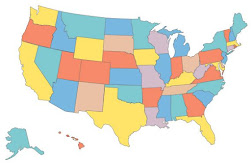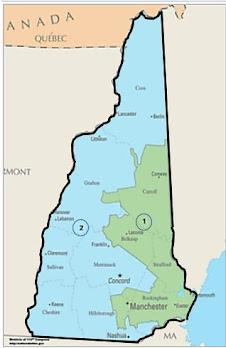Nashville, Tennessee seems to inspire counting. According to "
Nashville Cats," a 1966 song by the Lovin' Spoonful, "there's thirteen hundred and fifty two guitar pickers in Nashville..." More seriously, though, the latest U.S. Census finds Tennessee's capital city and surrounding areas to have grown spectacularly. An
article on the website of TV station WKRN notes that:
...multiple counties making up the Nashville metropolitan statistical area registered the 19th-highest collective [growth] rate among its peers nationally at 20.9%.As redistricting guru Dave Wasserman has been tweeting about lately, the growth of metropolitan Nashville creates a dilemma for the Republicans who dominate state government.
Should Republicans "carve up" the Nashville-based district of Democrat Jim Cooper to increase the GOP's margin in the state's U.S. House delegation to 8-1 from the current 7-2? Putting a small section of Nashville into each of what would be several Republican-leaning districts in the surrounding areas -- and leaving Cooper without a winnable district -- would gain the GOP a seat in the short-term.
Think of the Nashville area as a pizza. Currently, the blue (Democratic) center is intact, forming Cooper's district. Implementing a pizza slicing of the Nashville area (as shown to the right) would leave slices that were all majority red (Republican), with little blue areas at the tip of each slice.
There's also an argument to be made, however, that Republicans should refrain from doing so. Continued growth in metro Nashville -- potentially comprised heavily of Democratic-leaning voters -- could, over the years, expand the blue proportions of each slice and make the districts more competitive. Conceivably, the GOP could be left worse off at the end of the decade than it is now.
This is not purely a matter of speculation. As Wasserman alluded to in one of his tweets, Texas Republicans implemented a pizza slicing of its growing capital city -- and live-music hub -- Austin the last time around (2012). By 2018, things started getting dicey for the GOP (this 2018 Austin Chronicle article provides a map of the Austin-based districts). I created the following table to show how dicey things got for GOP representatives (in red) whose districts contained some of Austin.
Whereas one of these Republicans received nearly 80% of the vote in his district in 2012 and four others each received around 60%, all five fell into the 50s (sometimes the very low 50s) by 2018. Yes, 2018 was a strong Democratic year, but one party or the other has a strong year from time to time. Note also that, even though 2020 is widely considered a dismal Democrat year in Texas, GOP members from these districts didn't do much better in 2020 than in 2018.
Texas Republicans can shore these districts up with new redistricting for 2022. Still, the GOP's experience from slicing up Austin stands as an object lesson for Tennessee mapmakers. As noted above in one of Wasserman's tweets, some Tennessee Republicans seem to be on to this.





















